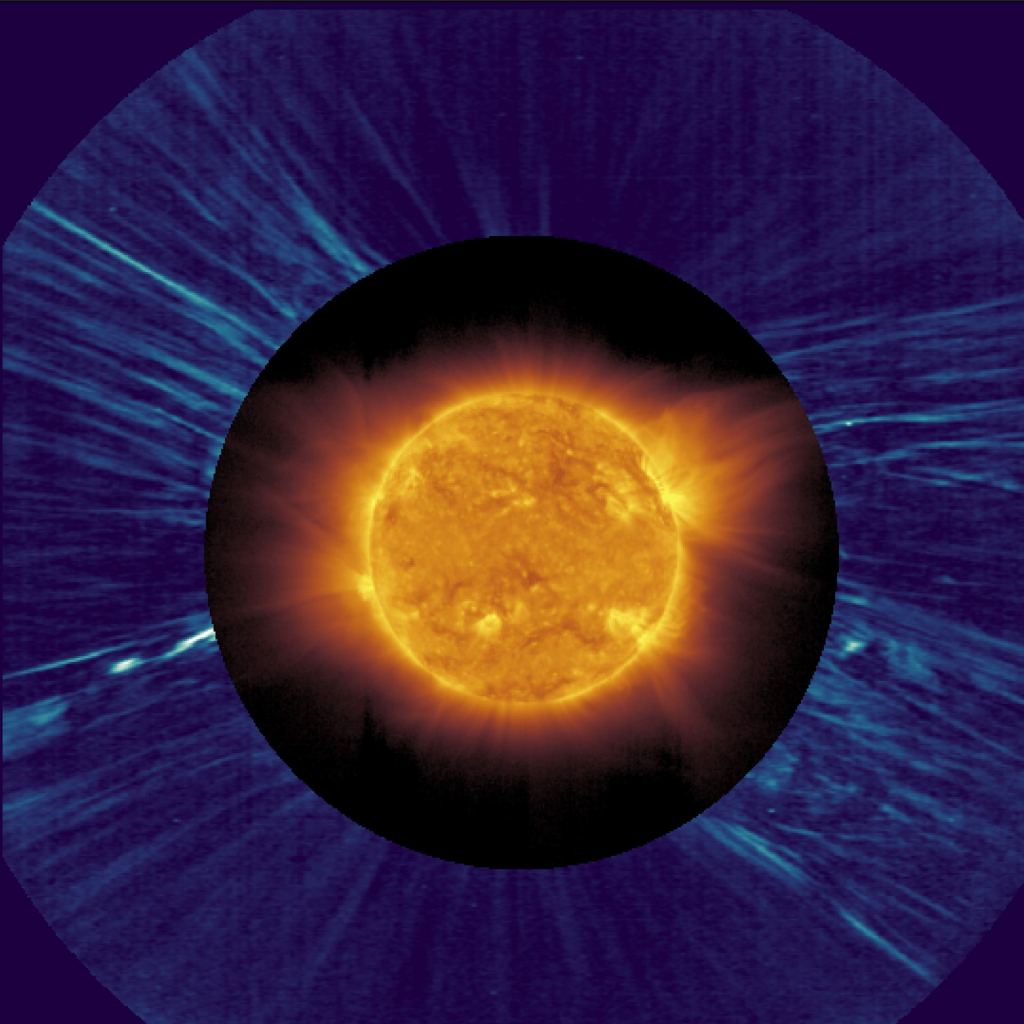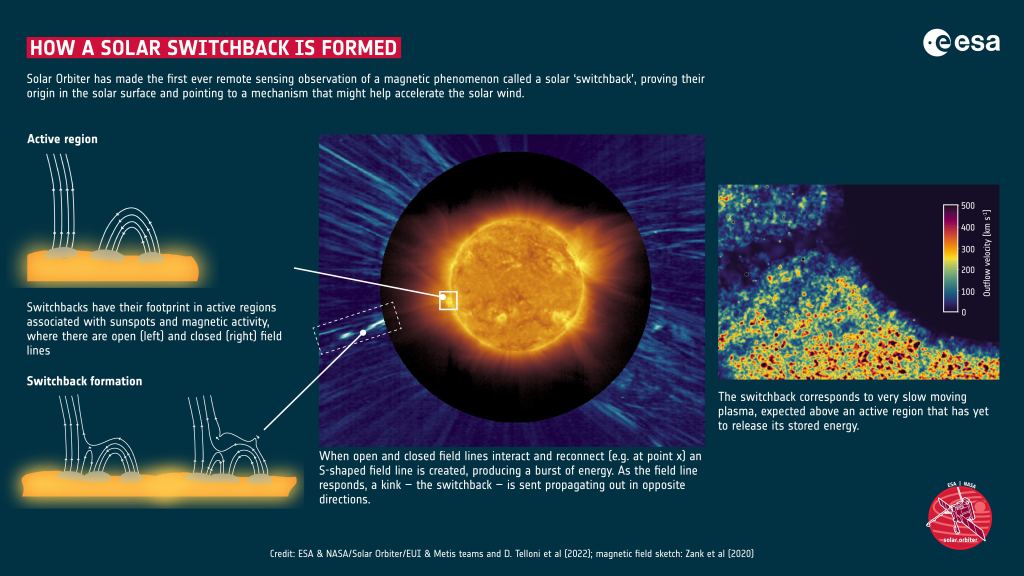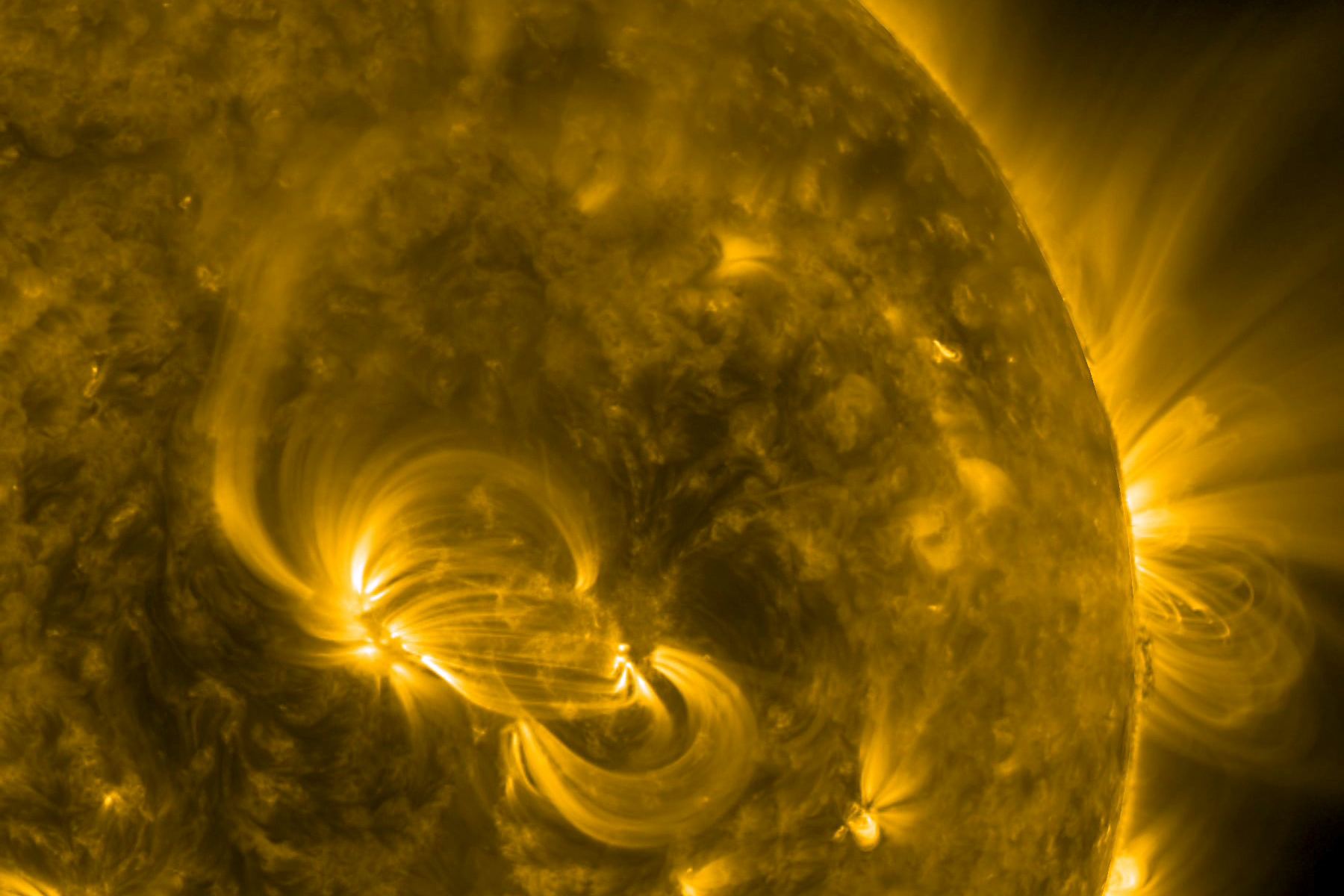On March 25, 2022, the ESA/NASA Solar Orbiter spacecraft closed in on the Sun, getting ready to study it during a flyby. Its Metis coronagraph instrument, which blocks out the Sun so the spacecraft can study its outer atmosphere, recorded an image of something strange: a distorted, S-shaped “kink” in a small area of plasma flowing from the Sun. It was a magnetic solar switchback.
These switchbacks aren’t unknown. Other spacecraft, including the Helios 1 and 2 missions in the 1970s, plus the Ulysses spacecraft in the 1990s, spotted these strange events, too. But people weren’t quite sure what was causing these curious kinked switchbacks. This observation changed that. Now, thanks to the Solar Orbiter images, scientists have a better idea of what causes a switchback. The data from Metis and the spacecraft’s ultraviolet instrument might also help solar physicists understand how these events affect the solar wind.

Our Magnetic Star
The Sun is an active cauldron of boiling plasma. Magnetic field lines flow in and out of active regions on the surface, contributing to its activity. Close to the Sun, and especially above the active regions, the lines can be open and closed. The closed ones are loops of magnetism that arch up into the solar atmosphere. Plasma flows along those field lines. Eventually, they curve around and disappear back into the Sun. The closed lines allow very little (if any) plasma to escape into space. The speed of the solar wind tends to be slow above those regions. On the other hand, open field lines are the reverse. They flow out from an active region and connect with the interplanetary magnetic field. Essentially, they become magnetic highways sending plasma out to space and spurring a fast solar wind.
The Metis-enabled Solar Orbiter images and data, coupled with some computer modeling of magnetic field regions on the Sun, show that switchbacks occur when open field links interact with nearby closed field lines. All the lines crowd together and eventually reconnect into stable configurations. That action releases energy and creates an S-shaped disturbance that travels out to space.

Observing a Solar Magnetic Switchback
Solar Orbiter provided a full view of the structure and confirmed the sinuous S-shape. The data also show that these rapidly changing magnetic fields can have their origin near the surface of the Sun. Interestingly, the speed of the plasma above the region where the switchback took place is still very slow. That’s because the active region has not yet released any energy to space.
The observation of this S-shaped kink in the coronal plasma caught the attention of Daniele Telloni of the Astrophysical Observatory of Torino, Italy (first author of a paper in Astrophysical Journal Letters about the finding). It reminded Telloni of an idea by Gary Zank of the University of Alabama in Huntsville. He suggested the idea of field lines between different regions reconnecting and switching back. Zank immediately recognized what was happening after he saw the spacecraft data.
“The first image from Metis that Daniele showed suggested to me almost immediately the cartoons that we had drawn in developing the mathematical model for a switchback,” he said. “Of course, the first image was just a snapshot and we had to temper our enthusiasm until we had used the excellent Metis coverage to extract temporal information and do a more detailed spectral analysis of the images themselves. The results proved to be absolutely spectacular!”
Confirming a Solar Magnetic Switchback Model
Telloni, Zank, and a team of scientists took the data from the METIS instrument and modeled a solar magnetic switchback. Their results bore a striking resemblance to the METIS image, especially after they included calculations for how the structure would elongate during its propagation outwards through the solar corona.

“I would say that this first image of a magnetic switchback in the solar corona has revealed the mystery of their origin” said Telloni. “The next step is to try to statistically link switchbacks observed in situ with their source regions on the Sun.”
Observing switchbacks and other phenomena is what Solar Orbiter was designed to do, and the current findings are exactly what scientists wanted to see. “With every orbit, we obtain more data from our suite of ten instruments,” said Daniel Muller, ESA Project Scientist for the orbiter. “Based on results like this one, we will fine-tune the observations planned for Solar Orbiter’s next solar encounter to understand the way in which the Sun connects to the wider magnetic environment of the Solar System. This was Solar Orbiter’s very first close pass to the Sun, so we expect many more exciting results to come.”
Solar Orbiter will pass close to the Sun again (inside the orbit of Mercury) on October 13th, to return more spectacular images and data. Thanks to some orbital adjustments made using Venus flybys, Solar Orbiter will be able to sample more solar latitudes. So, it probably won’t be long before the spacecraft nabs another switchback.
For More Information
Solar Orbiter Solves Magnetic Switchback Mystery
Observation of a Magnetic Switchback in the Solar Corona

